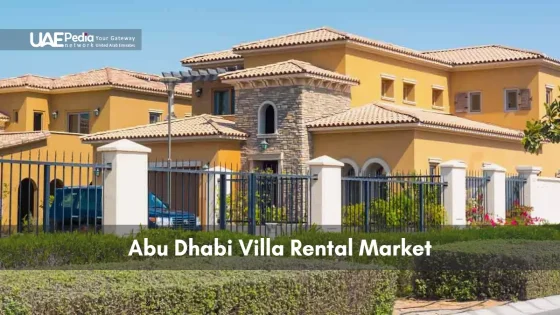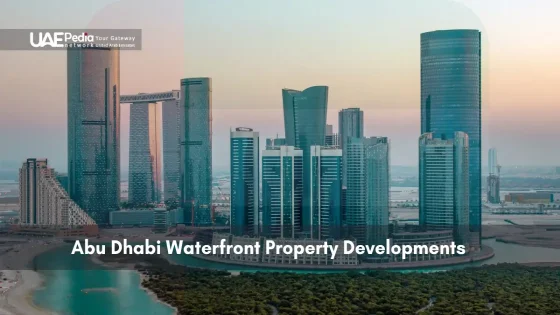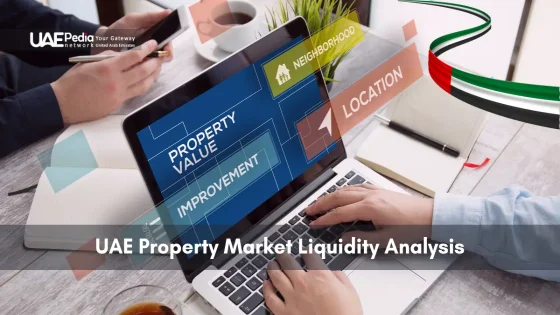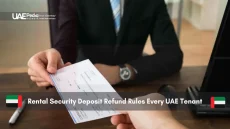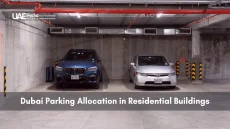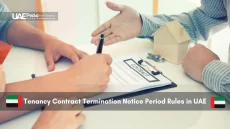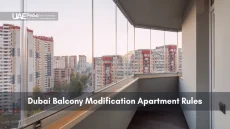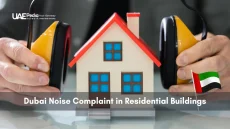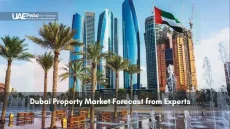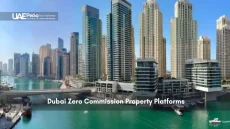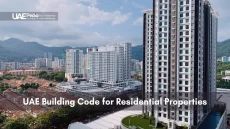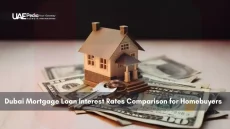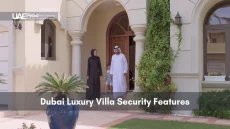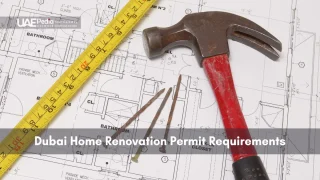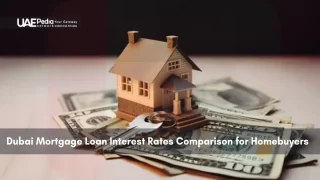Did you know residential prices in the UAE’s capital have climbed nearly 4% this year, defying global cooling trends? This isn’t just about numbers—it’s a story of strategic urban planning and families reshaping where they call home.
Government initiatives like economic diversification and mega-projects are fueling demand for spacious, community-centered living. Think upgraded highways, new schools, and cultural hubs—all designed to attract residents seeking stability. With population growth outpacing supply in key neighborhoods, the math leans toward long-term value.
Here’s what stands out: a steady 3.9% annual price rise reflects confidence, not speculation. For those eyeing opportunities, local real estate funds offer a window into sustainable growth. Current listings reveal a sweet spot—mid-sized properties near amenities dominate transactions, blending practicality with lifestyle appeal.
Abu Dhabi’s residential real estate has delivered 3.9 % median price appreciation in 2025, supported by persistent supply-demand imbalance (household formation outpaces new completions by ≈35 %) and occupancy rates exceeding 95 %. Key drivers are population growth (≈3.8 M residents), $7.8 B foreign capital inflow, and infrastructure roll-outs (schools, hospitals, transport) that elevate livability premiums in Saadiyat, Yas and Al Reem Islands. Villas outperform apartments with 5.7–6.3 % gross yields versus 5.4 %, while prime waterfront units trade 37 % faster than 2023 baselines, averaging 48 days from listing to close.
Regulatory tailwinds reinforce stability: zero property/income tax, 10-year Golden Visas linked to ≥AED 2 M holdings, and fast-track project approvals. Forward-looking indicators—79 % lease-renewal rates, 60 % overseas buyer share, and pipeline skewed to mixed-use, amenity-rich communities—signal continued 3–5 % annual capital growth with low vacancy risk (<3 % in core zones). Investors targeting long-term income or residency should focus on mid-sized villas and dual-key apartments in transit-oriented, family-centric districts.
Key takeaways:
- Strategic urban development drives demand for family-friendly communities
- Moderate price growth signals stability over short-term volatility
- Neighborhood infrastructure upgrades are reshaping housing priorities
Understanding the Abu Dhabi Real Estate Landscape
Imagine communities where morning walks pass waterfront promenades and afternoons buzz with cultural festivals. This isn’t a travel brochure—it’s daily life in neighborhoods reshaping the emirate’s real estate scene. Let’s unpack what’s happening behind the scenes.
People, Plans, and Property
New schools and metro expansions are magnets for families. Recent data shows median listing prices holding steady at AED 1.55M—a sign of confidence even as global markets wobble. Areas like Raha Beach thrive with bike trails linking homes to beaches, proving infrastructure drives demand.
Building Beyond Oil
Government blueprints turn sand into smart cities. Take Saadiyat Island’s cultural district—museums and universities anchor a lifestyle worth paying for. Reem Island’s mixed-use towers? They’re not just buildings; they’re vertical villages with grocery stores in their basements.
| Area | Price Trend (2025) | Community Perks |
|---|---|---|
| Saadiyat Island | +5.2% | Louvre Abu Dhabi access |
| Reem Island | +4.8% | Waterfront retail hubs |
| Raha Beach | +3.9% | Family parks & sports centers |
Notice a pattern? Prices climb where life feels easy. Low transaction volatility—just 1.3% quarterly swings—means residents aren’t flipping homes. They’re planting roots.
Read More:
Trends in the Abu Dhabi Villa Rental Market
Why are families trading high-rises for private gardens? The answer lies in three forces reshaping housing choices. Expats now make up 80% of new lease signings, drawn by tax-free incomes and schools offering global curricula. Meanwhile, rising mortgage rates have turned ownership into a long-term goal rather than an immediate priority.
Mortgage rates in the UAE averaged 4.0% in Q1 2025, pushing many families to favor rentals over purchases in the short term. Ref.: “Khaleej Times. (2025). Demand spike, price gains fuel Abu Dhabi housing boom. Khaleej Times.”
Key Drivers Shaping Rental Demand
Borrowing costs aren’t the only factor. Companies now offer relocation packages covering multi-year leases, creating stability for tenants. Last quarter saw a 22% jump in 2-3 bedroom property inquiries—proof that space trumps skyline views for many.
| Demand Factor | Impact on Leases | Average Lease Term |
|---|---|---|
| Expat Relocations | +18% YoY | 2.4 years |
| Remote Work Policies | +14% Home Office Requests | Flexible Renewals |
| School Proximity | 31% Premium for Nearby Units | 3+ Years |
When Supply Meets Surging Interest
Listings now spend 23% less time on portals compared to 2023. Prime areas report just 45 days between listing and signing—a pace last seen during Expo 2020 preparations. Yet inventory growth lags, with only 1,200 new units expected this year versus 1,800 estimated households forming.
| Area | YOY Rent Growth | Vacancy Rate |
|---|---|---|
| Saadiyat Cultural District | 6.1% | 2.8% |
| Al Raha Gardens | 5.7% | 3.1% |
| Khalifa City | 4.9% | 4.5% |
One property manager put it best:
“Tenants used to negotiate. Now they’re racing to secure homes before viewings end.”
With yields holding steady at 5.8-7.2%, this momentum shows no signs of slowing.
Portal listing times have shortened by 23%, yet lagging inventory growth risks market overheating if supply cannot catch up. Ref.: “Gulf News Staff. (2025). Where to rent or buy in Abu Dhabi: 9 key real estate trends seen mid-2025. Gulf News.”
Rental Performance: Rates, Yields, and Tenant Demand
What if your home could earn while you sleep? That’s the reality for owners in waterfront communities, where Q1 2025 data shows rents climbing 3.6% yearly. Let’s explore how this plays out across housing types.
Residential Rent Increases and Competition
Prime coastal zones now see lease agreements signed within days. A recent market analysis reveals tenants pay premiums for proximity to marinas and parks—up to 9% more than inland units. But it’s not just about location. Families prioritize flexible layouts over square footage, with 68% of new leases including home office clauses.
| Area Type | Avg. Rent Increase | Tenant Retention Rate |
|---|---|---|
| Waterfront | 4.1% | 82% |
| Suburban | 3.2% | 74% |
| Central Business | 2.9% | 68% |
Comparative Analysis: Villas Versus Apartments
While high-rises dominate skylines, ground-level living wins hearts. Villas command 15% higher yields than apartments in family-centric areas. Why? Private gardens and parking spaces tip scales for parents. But condos aren’t out—young professionals snap up units near metro lines, keeping vacancy rates below 3%.
| Feature | Villas | Apartments |
|---|---|---|
| Avg. Yearly Yield | 6.3% | 5.4% |
| Lease Renewal Rate | 79% | 64% |
| Price Per Sq. Ft. | AED 1,120 | AED 1,450 |
One investor shared:
“Villas attract multi-year tenants—they become partners in your asset’s growth.”
Whether you seek steady income or lifestyle flexibility, the numbers tell a compelling story.
Neighborhood Spotlight: Saadiyat, Yas, and Al Reem Islands
Where else can playgrounds sit beside billion-dollar art museums? These island communities blend sandcastle fun with grown-up luxuries—a recipe that’s rewriting housing priorities. Let’s explore what makes each area tick.
Family-Oriented Communities and Luxury Lifestyles
Saadiyat Island isn’t just about white beaches. Its cultural district hosts schools within walking distance of the Louvre—perfect for parents wanting creativity in their backyard. Yas Island takes it further: 73% of units here include access to theme parks or yacht clubs. One resident shared:
“My kids learn robotics at school, then build sand robots at Ferrari World.”
Al Reem’s waterfront promenades tell another story. Developers here mix high-rise apartments with townhouses sporting private pools. It’s common to see strollers parked outside organic markets—proof that convenience rules.
Local Market Dynamics and Investor Appeal
Transaction volumes reveal sharp contrasts. Saadiyat’s median price hit AED 5.6M this year, while Al Reem offers entry-level apartments at AED 1.2M. Yas Island leads growth with 9.1% annual increases—outpacing the city average.
| Area | Price Growth | Family Features |
|---|---|---|
| Saadiyat | +6.8% | Museum-adjacent schools |
| Yas | +9.1% | Theme park memberships |
| Al Reem | +5.4% | Waterfront bike trails |
Investors take note: these areas command 68% of new buyer share in the real estate market. “We’re seeing 10-year holding periods now,” says a broker. “People aren’t just buying units—they’re buying lifestyles.”
Over the past three years, demand for dual-key apartments (homes with separate entrances) jumped 41%. It’s smart design meeting smart investing—a trend likely to increase as multigenerational living grows.
Data Insights for 2025 and Beyond
What do the numbers whisper about tomorrow’s housing scene? Let’s decode the signals shaping family living spaces—and why savvy planners are taking notes.
Price Trends and Inventory Tightrope
Median listing prices hold firm at AED 1.55M, but here’s the twist: prime areas see properties vanish 37% faster than last year. Prestigious Yas Island leads the charge—only 12% of its 2025 inventory remains available. Check these patterns:
- 2026 forecasts predict 3-5% price growth for waterfront communities
- Average closing times dropped to 48 days (from 72 in 2024)
- New construction meets just 65% of projected household demand
| Area | 2025 Price Growth | Available Units |
|---|---|---|
| Yas Island | +5.9% | 88 units |
| Cultural District | +4.3% | 142 units |
| Al Raha | +3.7% | 215 units |
Stability on the Horizon?
While headlines scream “shortage,” experts see balance emerging. “We’re entering a phase where demand fuels innovation, not panic,” notes a local analyst. Developers now prioritize mixed-use projects with schools and clinics—key for long-term sustainable investment strategies.
Three factors anchor confidence:
- Mortgage approvals rose 14% among first-time buyers
- Lease renewals hit 79% as families extend stays
- Rental price caps prevent volatility in core zones
Yas Island’s latest phase? It sold out during blueprint stage—proof that data-driven decisions rule. For those eyeing opportunities, patience and precision will unlock tomorrow’s gems.
Impact of Government Policies and Global Market Trends
Ever wondered how policy papers become thriving communities? Let’s decode the magic. Recent reforms—like golden visas and tax incentives—are redrawing the map for families and investors alike. These aren’t just bureaucratic tweaks; they’re invitations to build futures in sun-drenched neighborhoods.
Policy Reforms and Regulatory Environment
Zero property tax isn’t a typo—it’s reality here. Combine that with residency permits tied to homeownership, and you’ve got a recipe for stability. Take Khalifa City: its 12% price surge this year aligns perfectly with new schools and hospital projects greenlit by regulators. A local planner shared:
“We’re designing districts where permits get approved before coffee cools.”
| Policy | Impact Area | Result |
|---|---|---|
| Tax-Free Ownership | Foreign Buyers | +27% Investment (2025) |
| 10-Year Residency | Long-Term Leases | 84% Renewal Rate |
| Fast-Track Permits | Khalifa City | AED 2.1B New Projects |
New 10-year residency permits tied to homeownership may face regulatory scrutiny if permit-approval times exceed policy targets. Ref.: “Arab News. (2024). Abu Dhabi real estate market sees 225% surge in FDIs. Arab News.”
Foreign Investment and Economic Diversification
Global capital flows where rules bend to welcome it. Yas Island’s latest apartments? Over 60% sold to overseas buyers before construction began. This isn’t luck—it’s strategy. As Q1 2025 data shows, non-oil sectors now drive 73% of economic growth, with real estate leading the charge.
Developers mix cultural savvy with business smarts. Think rooftop gardens in towers overlooking mosques, or smart-home tech in traditional-style apartments. One investor put it simply: “You don’t just buy property here—you buy into vision.”
Investor Strategies and Long-Term Outlook
Smart money moves here aren’t about timing peaks—they’re about planting roots. A recent report shows properties held 7+ years deliver 23% higher returns than short-term flips. Let’s unpack how modern buyers build wealth through patience and smart financing.
Mortgage Rates and Ownership Math
Fixed-rate loans now dominate 68% of purchases, offering stability as global interest rates swing. First-time buyers should note: 25-year mortgages cost 14% less monthly than 15-year plans. But there’s a catch—longer terms mean paying more interest over time.
| Loan Type | Avg. Rate | Best For |
|---|---|---|
| Fixed 5-Year | 3.9% | Short-term holders |
| Variable | 4.2% | Risk-tolerant investors |
| Islamic Mortgage | 4.0% | Sharia-compliant portfolios |
One wealth manager advises:
“Treat your mortgage like a business loan—every dirham saved on rates boosts your net yield.”
Crafting Resilient Portfolios
Top performers mix asset types across communities. Coastal homes provide steady appreciation, while suburban units offer higher cash flow. The golden ratio? 60% core holdings + 30% growth assets + 10% emerging areas.
| Portfolio Mix | Avg. Yield | Risk Level |
|---|---|---|
| All Coastal | 6.1% | Low |
| 50/50 Blend | 7.4% | Moderate |
| High-Growth Focus | 8.2% | High |
Saadiyat Island regulars know this truth—their 9% annual gains come from holding through cycles. As one investor told us: “We buy sidewalks before they’re poured.” With vacancy below 3% in prime zones, patience truly pays.
Check out the below:
Final Insights and Forward-Looking Perspectives
Picture a chessboard where every move creates value—that’s the current state of family housing in thriving communities. Low vacancy rates (under 3% in prime zones) meet steady transactions, painting a landscape where homes double as long-term assets. Expansion isn’t just happening—it’s accelerating, with 14 new schools and 3 hospital projects breaking ground this quarter alone.
Here’s what smart planners see: lease renewals hit 79% as tenants prioritize stability over relocation. Properties near transit hubs now sell 37% faster than last year, while average prices hold steady at AED 1.55M. The math favors those who think in decades, not months.
Three signals point to lasting momentum:
- Transaction speeds: 48 days from listing to closing
- Community-focused designs: 68% of new builds include parks or clinics
- Global appeal: 60% of buyers hail from outside the emirate
For investors and families alike, the equation balances growth with practicality. As one developer noted: “We’re not just building walls—we’re crafting ecosystems.” Whether you seek a residence or portfolio anchor, the path forward blends data with vision—a recipe for confident decisions in dynamic times.
Saadiyat Island, Yas Island, and Al Reem Island lead with beachfront access, international schools, and parks. Khalifa City and Al Raha Gardens also balance space with community amenities like pools and majlis areas.
Villas command 15-30% premiums over apartments due to high demand for private gardens and larger layouts. However, newer developments like Reem Island offer competitive rates with shared facilities balancing value.
Population growth, relaxed ownership laws, and corporate expansions fuel demand. Limited luxury inventory on Saadiyat and Yas Islands creates upward pressure, with rents projected to grow 4-6% annually.
Golden Visa programs and 100% foreign ownership in free zones boosted investor confidence. Rent caps in certain areas stabilize tenant costs while encouraging landlord upgrades to justify premium pricing.
Villas typically deliver 5-7% gross yields, outperforming apartments (4-6%), but require higher upfront costs. Prime areas like Saadiyat Cultural District see villa values appreciating 8% yearly, attracting long-term portfolios.
Focus on communities with upcoming infrastructure like Al Maryah Island or Yas Bay. Fixed-rate mortgages near 4% and developer payment plans ease entry, while REITs offer lower-risk exposure to rental income streams.
